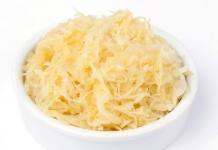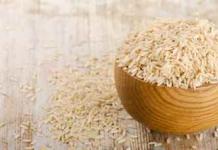Caraway- herbaceous plant biennial, used as a seasoning and as medicinal plant... To grow cumin, you need to know a thing or two about this plant.
The homeland of cumin is Eurasia. It is grown in North and Central America, China, Japan, India, Indonesia, northern Africa, Turkey, Iran, and southern regions of Russia. About 30 of its varieties are known.
Caraway prefers loamy soils, well fertilized with manure. The most valuable in it are the seeds, which contain 5% of aromatic essential oil.
Sow caraway seeds in the spring, as early as possible. Sowing is best done in rows. The distance between them should be from 30 cm to 45 cm and ribbons in two lines. The distance between the lines should be at least 20cm, between the ribbons about 50cm. The seeds are planted to a depth of 1 to 2 cm. For a planting of 10 sq.m. consumes 6 to 10 grams of seeds. Caraway can be grown by seedlings, but the most common plant is sowing with seeds.
Seeds can germinate at temperatures around 10 degrees and below. Seedlings can appear 20-26 days after planting.
Caraway Seed Care
In the first year of planting, you need to regularly loosen and weed the aisles. Caraway, like any other plant, requires feeding. For 10 m2 of plantings, an average of 130 g of potassium salt, superphosphate and ammonium nitrate is needed.
In autumn, on caraway plantings, it is necessary to carry out deep loosening, adding fertilizers twice as much as indicated above. Caraway and its seedlings are able to easily tolerate frosts, and if the plant has formed a rosette, it can winter well.
Cumin can be grown on its own as a crop, or it can be used as a compactor.
As a plant, cumin makes great demands on lighting, is able to tolerate partial shade (if planted in the garden between rows), but remember that this will reduce the yield, and the seeds will lose some of their aroma.
In the first year of caraway cultivation, additional crops can be grown in its row spacings.
Harvesting cumin
Collect caraway seeds in the second year. They ripen in the middle of summer and can easily crumble, therefore, as soon as the seeds turn brown, the plant must be pulled out, collected in bunches and tied, placing them in the shade (in the attic or under a canopy) with paper or anything else under them. peel off the seeds. From a garden with an area of 10 sq. meters, you can collect up to 1.5 kilograms of seeds.
The use of cumin in everyday life
Leaves and young stems of caraway seeds are used in green form as a seasoning for soups and vegetable dishes, as well as in salads. Caraway root is also used for food.
Caraway seeds are widely used in the manufacture of confectionery, bakery and alcoholic beverages, adding unrepeatable aroma, added to meat dishes: rolls, sausages, boiled beets ().
Caraway is used in the preparation of marinades, in the salting of various vegetables and sauerkraut, in the preparation of sauces, soups and other various dishes. Its green stems and leaves can be used to make salads and soups.
Also caraway can be used as a medicinal plant... It is a good laxative, sedative, choleretic, tonic, improving digestion and enhancing intestinal motility.
You may be interested in the following articles: and.
Read Business Gardening and study with us!
Among the stocks of spices available to every housewife, there is probably a jar of caraway seeds. In cooking, this two-year-old spicy aromatic herb is very well known - young cumin greens and its rhizomes are added to soups, side dishes and salads, and the seeds, whole or ground, are widely used to flavor baked goods, marinades, sauces, homemade liqueurs and liqueurs. In medicine, cumin is valued for its numerous healing properties (choleretic, lactogonic, carminative, antibacterial), due to which it is included in many medicinal preparations.
And if many spices come to the consumer of the middle zone from overseas countries, then there is no need to go far for caraway seeds - it is unpretentious and cold-resistant, it will grow well in a summer cottage.
Description of cumin
Caraway is a fairly well-known plant that the ancient Romans began to use, and it is still successfully used all over the world. Cumin is grown in France, India, Turkey, North America, Brazil and Egypt. Cumin has another popular name - anise. You can meet him at the edges of forests and in dry meadows.
The stems of the plant are single and straight. They grow up to 1 m. The leaves are oblong, resemble an egg in shape and grow up to 20 cm in length and up to 10 cm in width. The flowers are white and small, reaching up to 1.5 mm in length. The fruit is an oblong flattened droplet that reaches up to 3 mm in length and up to 2.5 mm in width. Cumin is very easy to recognize by its smell. The fruits contain essential oils, fatty oils, coumarins, protein and tannins.

What varieties of caraway are grown
There are few varieties of caraway. The varieties are grown Aromatic, Appetizing, Velikolukskiy, Oriental aroma. They have leaves with varying degrees of dissection and yield of commercial greenery. The most famous variety is Galyanovsky Semko, a biennial plant. In the first year it forms a rosette of leaves, in the second year - peduncles and seeds. The stem is erect, branched, furrowed, hollow. The leaf is alternate, green, twice pinnately dissected into lobes. The flower is small, white, the inflorescence is an umbrella.
When to plant cumin
In open ground, caraway seeds are sown in spring - in the second half of April. Sometimes summer residents carry out the autumn sowing of this culture - at the end of October. The plant in the 1st year forms a rosette of basal leaves and a root crop, and on the 2nd flower stem and seeds. Caraway leaves resemble carrot tops in appearance and shape. And in the second year, an umbrella inflorescence with seeds is formed.
What is needed to grow cumin
In the first year of its cultivation, the soil in the garden should be thoroughly loosened and cleaned of weeds. Do not be alarmed, this should be done only in the first year, then the caraway will take good care of itself. It will be useful for the future harvest of caraway seeds if you spill the prepared soil with diluted slurry of rotted manure. It will also be useful for your fruit trees in the garden. You can cover the ground with rotted compost or dig it up with manure.
Sowing cumin
Caraway is a cold-resistant plant, its seeds germinate at a temperature of + 3-5 ° C. Seedlings of a rooted plant tolerate frosts well. Therefore, cumin is sown in early spring or autumn (in August). In the first year, caraway develops slowly, you can sow a compacting crop to it. To obtain early greens, it is grown through seedlings, which are prepared in warm greenhouses or boxes, followed by planting in open ground.
Caraway is undemanding to light, but prefers moist loamy and sandy loam soils rich in organic residues. For early growth, seeds should be soaked before sowing. Seeding rate of seeds is 6-8 g per 1 m2. Seeds are sown in rows 1.5 cm deep. Placement on beds in rows with a distance of 30 cm between them and in a row between plants of 10-15 cm. After 2-3 weeks, after the first shoots appear, lighthouse crops are sown to the caraway seeds - radish, lettuce, mustard. Due to the preference for a neutral soil, cumin will thrive best when surrounded by plants such as cucumbers and cabbage.

Caraway Seed Care
Caraway responds well to nitrogen fertilizers. It is recommended to apply soluble fertilizers during spring cultivation, and slow-acting phosphorus-potassium fertilizers in autumn. Caraway requires constant maintenance of soil moisture. Insufficient watering can lead to premature flowering. Row spacings are subject to periodic removal of weeds and loosening of the soil to a depth of 8-10 cm. After the formation of a rosette of leaves, caraway is thinned out, taking into account the formation of a distance of 20-30 cm between plants, and then fed with complex mineral fertilizers. During early spring loosening, caraway plants of the second year of life will need top dressing in the form of urea.

How to grow cumin from their rhizomes in winter
Summer residents who want to get fresh cumin greens in winter can try to grow this crop from rhizomes. To do this, at the end of October, several adult caraway roots are dug from the garden bed and planted in a box with a fertile substrate. The box is placed on a cool veranda or loggia. As soon as the first green shoots appear, the plantings are transferred indoors and provided with high-quality care.
Fresh articles about garden and vegetable garden
Pests and diseases of caraway
The main enemy of caraway is powdery mildew. The disease develops intensively in damp weather, when there are sharp changes in temperature. The first sign of the disease is the appearance of a loose white bloom on the stems. Caraway seeds can also become infected with black rot, spotting and phomosis. For preventive purposes, it is necessary to carry out disinfecting treatment of seeds, weed the garden in a timely manner and remove plant residues. When the first signs of disease appear, you can use fungicide solutions that contain copper.
Caraway seeds can be attacked by umbrella bugs, ticks, moths, wireworms. Effective remedy in the fight against pests - infusions of garlic, wormwood or potato tops, as well as a soap solution with the addition of ground red pepper. These formulations are intended for spraying, but if you plan to eat the leaves of the plant for food, you will have to do only with preventive measures.
Harvesting cumin
Caraway seeds ripen by July. Collect them when they turn brown. Don't wait until all the seeds are ripe. When they appear in the center umbrella, cut off the entire plant. Place it on paper and dry it in the sun. Unripe seeds will ripen. You can also tie the plant into bunches and hang it upside down to dry. Be sure to spread paper under the bottom, since the seeds tend to crumble. Store dry cumin in a jar with a tight lid. Cut the plant when its shoots are 15 cm tall. Use greens quickly as they do not last long. If you pack it in plastic bags and put in the refrigerator, it will keep fresh for several days. You will be able to harvest several times over the summer. Remember to leave young leaves. Caring for caraway seeds involves thinning. Leave 15 cm between individual specimens. Loosen and water the soil all summer. Avoid weeds.

Caraway seeds are used as an aromatic additive in baking bread, preparing various dishes, making sweets, buns, cakes, sausages, cheese and other fermented milk products. Cumin is often used in salting and pickling. Leaves and root vegetables are consumed fresh and dried. You can even make jam and jam with honey and sugar from root vegetables.
Caraway seeds have a very pleasant aroma and a bitter-spicy taste due to the presence of essential oil in its composition, which makes the plant so valuable product... In addition, young cumin leaves are rich in vitamin C, and sugar accumulates in the roots. Its seeds are rich in proteins, organic salts and other useful substances. Caraway seed oil is used to flavor various foods; it is added to salads, sauces and seasonings. The seeds are used for salting cabbage, cucumbers and tomatoes.

Cumin seeds are stored in a well-sealed container, otherwise, you cannot avoid the evaporation of essential substances and the loss of a wonderful aroma.
It will be about amazing plant, which came to us from time immemorial. This beautiful flower, a spice and a medicinal plant at the same time. The Greek scientist Hippocrates (5th century BC) called it "the black seed". The black color of the seeds also determined the botanical name of the plant nigella (from the Latin nigellus - blackish). More common names - kalindzhi, nigella or black cumin.
It is an annual plant of the buttercup family. The stem is erect, highly branched, up to 50 cm high. The leaves are pinnate, small, openwork. The flowers are rather large, single white or blue on long stalks. After pollination, the carpels grow together into seed pods. Inside there is a fruit with black seeds that have a specific taste and smell. It is found wild in East Asia, Southern Europe and North Africa.
As a medicinal plant, black cumin is little known in our country, while in the East its healing properties have been used for more than 3 thousand years. Even in Ancient Egypt, black cumin was used to treat gastrointestinal diseases, and the oil was widely used in cosmetology. It is curious that a vessel with black cumin oil was found in the tomb of Pharaoh Tutankhamun. And this fact speaks of the importance of this plant, because they took with them to another world only everything that was most valuable.
The Old Testament (in the book of the prophet Isaiah) also indicates the undeniable importance of black cumin and describes in detail the methods of extracting oil from this plant. The famous Greek physician Dioscorides, who lived in the 1st century AD, wrote that the "black seed" was used to treat headaches, remove worms from the body, increase the amount of milk in nursing mothers and improve general condition organism.
Black cumin is especially popular in the medicine of the East. There it is called the plant of the prophet. Because it was the Prophet Muhammad who mentioned him in many hadith, citing detailed recipes and methods of its use for specific diseases. He also owns the famous saying: "Truly, in black caraway there is a cure for all diseases, except death." These words are confirmed by the research of modern scientists.
Black cumin - benefits, uses and properties
The seed oil of this plant turned out to be not only a means of increasing immunity, but also surpassed the most powerful antibiotics in its antibacterial properties. It turned out to be effective against Escherichia coli, Staphylococcus aureus, Helicobacter pylori and even cholera vibrio.
Also, the use of black cumin stimulates the production of bone marrow, which means it is an ideal way to prevent the development of cancerous tumors. This fact was confirmed by scientists from the Cancer Immuno-Biological Laboratory of Southern California.
Black cumin can be called a universal medicine, because, due to its composition, it has many medicinal properties and is able to positively affect a variety of biological processes in organism.
The seeds contain macro- and microelements: calcium, iron, copper, phosphorus, potassium, magnesium, manganese, zinc, molybdenum, chromium, selenium, strontium, boron and iodine; vitamins, especially E and B, natural antibiotics, fatty acid: oleic, linolenic, etc.; essential oils; glycosides, saponins and fiber. The enzyme lipase and vitamin E contained in the seeds have a beneficial effect on the functioning of the liver and pancreas. It was also found that vitamin E slows down aging, promotes better information perception, and strengthens memory.
Even in ancient times, to improve memory, Arab healers recommended to eat 3 g of ground seeds mixed with 10 g of honey every day. The same remedy helps dissolve gallstones and kidney stones.
Seeds are very effective in depleting the body, as a remedy for coughing, relieving pain. Black cumin will warm the body when cooled, relieve severe poisoning, help in the treatment of chronic diseases: cholecystitis, enterocolitis, hepatitis, pancreatitis. Taking seeds has a beneficial effect on the cardiovascular system: it reduces capillary fragility, improves blood circulation, normalizes blood pressure, and prevents the formation of blood clots.
For centuries, this natural remedy has been used to preserve shape and improve complexion. Just one coffee spoon of ground seeds on an empty stomach - and the skin will be clear, and the complexion is perfect.
Black cumin is also used externally for the treatment of many skin diseases: eczema, dermatitis, psoriasis, boils, lichen. In the old days, a mixture of ground seeds and apple cider vinegar was used to remove warts, birthmarks, cure baldness, eliminate skin peeling and pain in joints.
To improve the body's resistance harmful influences, improve health, avoid many diseases, keep the body and brain in good shape, it is recommended that adults eat 1 teaspoon of whole or ground black cumin with water every day. Children from 3 to 12 years old are given half the adult dose.
Has a positive effect on the entire body and medicinal tea... Due to the acceleration of metabolism, natural cleansing and removal of harmful elements from the body occurs. It is not surprising that this drink is becoming popular as a weight loss aid as well.
There are two ways to prepare a drink. The first is to use whole seeds. It is necessary to pour 1 teaspoon (5 g) with boiling water (250-300 ml) and simmer over low heat (preferably in a water bath) for 10-15 minutes. Then infuse for 1 hour. Drink 3 times a day for 20 minutes. a third of a glass before meals. For the second method, the seeds need to be ground in a coffee grinder and brewed like regular tea. Take 1 teaspoon for I glass of boiling water, leave for 10 minutes. Drink on an empty stomach shortly before breakfast. You can add honey. Tea is effective in the treatment of gastrointestinal diseases, has a diuretic and choleretic effect, normalizes blood pressure, promotes lactation. Useful for gynecological diseases, and is also able to alleviate the course of asthma and kidney stones, improve sleep.
To cleanse the liver and increase the body's immune forces, a mixture of ground black cumin seeds, olive oil and honey in equal parts is taken for 3 months. Drink 1 teaspoon of the mixture 2 times a day. The use of black cumin is possible along with the use of any other medicines. It is a natural and relatively mild medicine and does not heal instantly. Treatment of chronic diseases requires long-term use - from 3 to 6 months. In this case, an exacerbation of diseases is possible - this is a normal reaction of the body. Eating black cumin in general helps the body's natural healing process, better fight infections, fight disease and maintain human health.
In modern conditions, black cumin seeds are a natural and safe stimulant of energy and metabolism for an organism exhausted by ecology, stress and many chronic diseases.
In addition to amazing healing properties, black cumin also has unique culinary qualities.
Black cumin: cultivation
And in conclusion, I want to dwell on how to grow this unique plant on your site. But first I would like to emphasize that there are many varieties of it. The most famous are two species that we grow. First nigella saliva, nigella sowing or true black cumin, plant 30-50 cm high. Seeds are triangular in shape, with horizontally arranged folds, very similar to onion seeds. The smell is pungent, spicy, nutmeg. It is this plant that has the most powerful medicinal properties.
Second view nigella damascene, nigella damask or turkish black cumin, up to 75 cm high. Its seeds are more rounded. They have a pleasant smell, reminiscent of the smell of strawberries. This species has become a favorite ornamental plant in Europe since the middle of the 16th century. Because of its attractiveness, it is a more popular plant than blackberry. This garden plant is also known by the poetic names "the girl in the green" or "love in the fog". Its lush openwork greenery and vibrant seed pods can be used to create bouquets.
Planting black cumin
Black cumin is a cold-resistant plant; seeds are sown in open ground in early spring, as well as before winter. Seeds overwinter well in the ground and germinate at a temperature of + 6-8 ° C. It is best to grow on loose, nutrient soils with a neutral reaction. For 1 sq. m will need 1 g of seeds.
It is better to sow in rows, with row spacing of 30-35 cm for sowing nigella and 40-45 cm for damask nigella. The seeding depth is 2.5-3.5 cm. After sowing, the soil can be covered with foil until shoots appear. Seedlings appear in 12-15 days. They easily tolerate short spring frosts. After the plants grow a little, they need to be thinned out, leaving 15-20 cm between them. There is a lot of carotene in the leaves and ascorbic acid, it is useful to add them to salads as herbs, along with other herbs.
Black cumin prefers open spaces generously warmed by the sun. It grows poorly in the shade. Does not tolerate the proximity of ground cover plants. When growing, it is better not to use mulching - this has a bad effect on the plants. He does not like both long periods of drought and excessive moisture. Moderate watering is needed if necessary.
Kalindzhi care
Young plants bloom 40 days after sowing. Their flowering lasts for one and a half months. During flowering and fruiting, you can feed with phosphorus - potassium fertilizers.
But fertilizing is applied carefully: caraway does not like any excess of fertilizers. It is best to plant after those crops for which organic matter was introduced in the previous year, or after peas, beans, beans.
The seeds ripen in late August - early September. Harvesting begins when 2/3 of the seeds are ripe. Plants are cut, tied in small sheaves and placed to dry under a canopy, be sure to spread a cloth, since seeds can crumble from inverted seed pods. You can dry them by simply spreading them out on a cloth and turning them periodically. After the plants are dry, you will need to separate the seeds and use them for treatment.
Black cumin - growing experience: video
 QIC New 4D silk mascara cosmetics rimel black ...
QIC New 4D silk mascara cosmetics rimel black ...
Spices have been making people's food tastier and more aromatic for many millennia. One of the spices demanded by many cuisines of the world is caraway seeds. This article looks at how to grow caraway seeds by sowing in the ground and harvest deliciously scented seeds.
Description of cumin
Common caraway (Carum carvi) is a herb belonging to the Umbrella family, grown in both annual and biennial crops. Its homeland is Europe and Central Asia. The plant has a thin herbaceous trunk 60–80 cm high and many branches. At the base, feathery leaves of an oblong shape grow.
The flowering of caraway occurs in the second year of the growing season, in late spring. The flowers are small, white, located in the apical umbrellas. Fruits with a spicy taste, consisting of two oval curved seeds, ocher or light brown in color with furrows in the form of slightly darker veins. The popular name of the culture is anise. 
Caraway seeds contain 2-5% essential oils, protein, calcium, phosphorus, magnesium, vitamins C, B1, B2, B3 and A, thymol, dipentene, cumaldehyde and other substances. Due to their special spicy taste, they are widely used in cooking. The yield of clean seeds is 0.6–1 t / ha.
Roasted aniseed seeds are used as a spice and flavoring in a variety of vegetable and meat dishes in various cuisines around the world. Especially often they are added to dough for baking bread, or they are used as a powder on top of the crust of baked goods, which gives the baked goods an unusual taste and aroma.
Did you know? Cumin has been known to mankind for over three thousand years; archaeologists have found it in the Egyptian pyramids.
Choosing a place for planting cumin
The ideal substrate for growing caraway seeds is a mixture of sand and black soil, abundantly fertilized with well-decomposed manure or other organic matter that promotes plant growth. The soil should be neutral or prone to alkalinity; on acidic soils, this crop does not grow well. Before growing anise in spring, acidic soils should be well calcified in autumn.
Cumin precursors
Good predecessors for caraway seeds - legumes, potatoes, corn, tomatoes, cucumbers. You can not sow cumin where celery used to grow.
How much light does caraway need
It grows and develops best in well-lit beds. Lack of lighting negatively affects the development of the herbaceous stem of caraway seeds and the establishment of future testes, so this crop should not be grown in the shade or partial shade.

Temperature and humidity requirements
This is a crop of short daylight hours, so the seeds germinate early, as soon as the air temperature reaches + 8 ° C. A prerequisite for seed germination is high air humidity. With early spring planting, the seedling quickly grows a full, well-developed stem. In the heat of summer, anise forms a weak and low bush, which in the future leads to the formation of small, defective seed umbrellas.
Planting caraway seeds in open ground
In areas suitable for the climate for this crop, cultivation can be carried out by direct sowing of seeds in the soil in the spring. You can also grow anise in greenhouses, containers or pots. Some of the seeds can be sown under cover starting April 20, or sown outdoors in early May.
In any case, it is advisable to cover the plantings with spunbond until the end of May in order to protect the plants from night return frosts. Caraway can also be grown through seedlings, transplanting seedlings into open ground with the arrival of heat.
Selection and preparation of seeds for planting
The seeds of this culture contain quite a large number of essential oils that inhibit germination. In order for the seed to sprout quickly and amicably, it must be soaked for five to six hours. For soaking, the seeds are placed in a thin layer on top of a wet woolen cloth and rolled into a roll.
When soaking, you cannot simply fill the seeds with water, since they can suffocate, which will provoke their further decay in the soil. At the end of the soaking procedure, the seeds are shaken off the wet cloth onto a newspaper sheet and slightly dried; then they can be used for sowing. 
How to prepare the soil for planting cumin
Before sowing, you need to prepare the land in the garden.
Landing area preparation:
- In early spring, as soon as the soil in the garden dries slightly, the future garden bed is cleaned of last year's plant debris using a rake.
- Next, mark the boundaries of the beds for anise and lay out well-rotted animal manure or compost inside these boundaries. Five buckets of organic fertilizers will be enough for a 5 m² garden.
- Fertilizer is distributed evenly over the entire surface of the bed, after which they dig up the earth with a turnover of the layer in order to embed organic matter into the soil.
- The soil on the dug up bed is leveled with a garden rake, forming a soil layer so that a slight slope of 3-5 cm is obtained from the middle of the bed to the edges. Such a slope will help to drain excess moisture from the surface of the bed onto the path.
Important! Fertilizing the garden and sowing caraway seeds can be done in late autumn, before the onset of frost. During the winter, organic matter will partially decompose and enrich the soil with nitrogen, and the seeds will be stratified.
Scheme and rules for sowing cumin
This is an unpretentious plant, but for normal development and growth it requires a certain living space. Anise does not withstand excessive density, therefore, its sowing and further cultivation must be carried out taking into account these requirements.
How to sow cumin outdoors:

Features of caring for caraway seeds in the open field
The crop is grown to produce fragrant seeds, so the purpose of cultivation is to form strong and extensive seed-bearing umbrellas. Gardeners have long noticed that large and healthy seeds are produced only by a well-developed mother plant, therefore it is necessary to provide cumin with all conditions for growth: fertilization, watering, weeding and loosening.
Before germination
During this period, all care consists in maintaining the soil in a slightly damp state. For these purposes, you can carry out moderate watering every 2 days, or immediately after sowing, cover the bed with non-woven agrofibre, which will not allow moisture to evaporate from the soil. Before the first shoots appear, loosening of the soil is not carried out, since the gardener can damage the germinating seedlings with a sharp garden tool.
In the first year of life
In the first year of cultivation, the task of the gardener is to help build up a powerful root system of anise, thanks to which the plant will develop strong testes next year. 
Care of young plants after seed germination:
- In the first stages of growth, young cumin is watered very carefully, feeding into the water only to the base of the stems, very sparingly. To avoid erosion of the soil and disclosure of the root system, use a garden watering can with a fine water diffuser. Young plants are often watered, but as the caraway grows, watering is gradually reduced to one per week. In cases of extreme heat, it is recommended to water the seedlings abundantly early in the morning or late in the evening with water at room temperature.
- Weeding is regularly carried out in the aisles to clear the soil of weeds that can suffocate young seedlings. Loosening is also carried out to supply oxygen to the roots of plants.
Important! To exclude future uncontrolled growth of caraway seeds in the garden, it is advisable to cut off the testes from the plants before the seeds begin to fall out of them. Caraway seeds can also be spread in nearby areas by insects and birds and litter vegetable beds.
Adult plant care
The grown bushes still need regular weeding of the row spacings so that they always remain free of weeds. The frequency of watering adult plants is reduced, and in regions where summer rains occur at a frequency of three to four times a month, they stop altogether. Since the plant throws out seed umbrellas in the next growing year, dry stems are removed from the garden in the fall. With the arrival of winter, more snow is thrown onto the anise bed to warm the caraway roots.
In the second year of the growing season, the plant throws out flower arrows, at the ends of which umbrellas are formed (like dill). The more powerful the plant, the more extensive the seed umbrella and the larger the seeds in it. One gram can contain more than 350 large or about 700 small aniseed seeds. 
A month after the formation of the testes, the flower arrow is tied up to strengthen it to the support. This will help keep the grass stems from breaking in strong winds or rainstorms.
Features of harvesting
Seed umbrellas are harvested as soon as they turn yellow and dry (mid to late August). Branches with inflorescences are cut and grouped into bunches, after which they are hung to dry in a dry and well-ventilated place.
Subsequently, seeds are removed from the well-dried inflorescences by rubbing the umbrellas between the palms or carefully using a wooden mortar to thresh the testes so as not to crush the seeds in the process. Threshed seeds are separated from dry plant debris using the wind. In the future, dry seeds are stored in glass jars.
Did you know? In the East, black cumin is used as a substitute for black pepper. At the same time, the oil squeezed out of it is valued in cosmetology as a means for rejuvenating facial skin massage.
Caraway seeds are used in cooking, medicine and cosmetology. It is not difficult to grow anise seeds in the country, for this it is enough to wait for the shoots after sowing the seeds and provide the plants with full care for the entire growing season.
Growing caraway seeds in your garden will bring you a double benefit, since you can eat all parts of the caraway seeds and roots and leaves, and in the second year and seeds. Caraway (Carum carvi) is a biennial herb of the umbrella family.
In the first year, a rosette of leaves appears. The leaves are strongly dissected, similar to carrot leaves. The height of the leaf is 20-30 cm, the main stem with a peduncle is 40-60 cm high. In the first year, you can eat the root vegetable and leaves. In the second year, the seeds ripen.
How to grow caraway seeds in the garden
Caraway is a fairly hardy plant. Its leaves emerge first from under the snow. Cumin leaves can be used as the first fresh herb. The roots, leaves, and seeds of caraway are a great seasoning for salads, soups and baked goods. In the second year, flower stalks appear, and fragrant seeds are formed. Cumin seeds should be harvested early in the morning so they don't fall to the ground.
Caraway is a fruitful crop that produces a large number of seeds. Caraway is famous for its spicy seeds with a light anise aroma, widely used in cooking. In addition, caraway is a medicinal plant that has been known since ancient times. The seeds are used to treat stomach problems. Tea, decoctions and infusions are prepared from the seeds. Read caraway as a medicinal plant here.
Cumin growing conditions
Caraway is a fairly winter-hardy and cold-resistant plant. It winters well in our conditions, so caraway can be grown as a biennial. Caraway is very picky about light. Prefers long daylight hours. Growing caraway is well suited for latitudes that provide long daylight hours. Under conditions of long daylight hours in summer, much more essential oils, phytonutrients, etc. are formed in caraway seeds. nutrients.
Soil requirements.
Caraway does not tolerate heavy clayey, marshy, acidic soils. For the rest, he prefers moist soil fertilized with humus.
Sowing caraway seeds.
Sowing can be done before winter or early spring. Before sowing seeds, the garden bed should be well dug up and fertilized. The distance between the rows is 25-30 cm. For 1 m2, 1 g is required. seeds. Sowing seeds is carried out to a depth of 2-2.5 cm.
Caraway seedlings appear slowly. When 2-3 true leaves appear, the seedlings can be rowed. Especially if you are going to grow caraway seeds for seeds. In the future, weeding, loosening between rows and fertilization are carried out.
You can feed seedlings with a complex mineral fertilizer... The first greens can be cut when the leaves reach a height of 15-20 cm. The greens can be cut several times over the summer as the leaves grow back.
Cumin as a green crop
In the first year, cumin produces a lush rosette of dissected leaves. Caraway can be grown as an annual. Then the roots will also be used, which can be used as root parsley, added to soups or salads. There are many useful substances in the young foliage of caraway. Young cumin greens are an excellent addition to soups and side dishes.
But mostly cumin is grown for seeds that have healing properties... The seeds are harvested at the end of August. The umbrella with caraway seeds begins to turn brown, like dill. The umbrellas are cut, preventing the seeds from shedding, dried, then the seeds are threshed.
The harvested and well-dried seeds should be stored in a glass jar. Caraway seeds are used in homemade preparations, when salting and pickling cabbage. Try planting cumin in your garden. Growing caraway seeds is easy and will provide you with aromatic seeds and herbs.



































